I recently started the UTAS unit HAA003 Introduction to Family History after a spur of the moment decision to do so. I had read about it, mainly on Facebook, and talked to someone who had done it and found it very useful so when it popped up in an Inside History article I was reading I decided to sign myself up.
The main reason I am doing this unit, (I worked this out two weeks later when I actually realised what I had done), was to structure and organise my research. Not better than how I do now, just at all. Since starting my family history research I have made some wonderful discoveries, however I have not followed any plans or structure, which really means I have discovered things that are pretty easy to find, ie., on Ancestry, FMP, FamilySearch etc. I hoped the UTAS unit would help me focus and structure my research, and it has.
The main assessment task for this unit is to undertake a Research Plan. Pose your question and endeavour to answer it. So the first difficult part was to work out which ancestor and problem I was going to investigate. This took me two weeks to decide, you don’t need the details, and I settled on my great great grandfather, David John SMEDE/SMEDES. Why did I choose him? I like his photo. There is something about him that makes me wish I had known him.
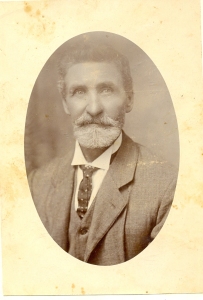
David John SMEDE
I also chose him because I have been unable to discover how and when he arrived in Australia. David John SMEDES, sometimes also known as John David SMEDES, was born in Spitalfields, England in 1847. Before starting this unit, I had traced David through his birth certificate and UK Census records in 1851 and 1861, however after the 1861 Census I could find no mention of him until his marriage to Catherine PICKETT in Rylstone, NSW, AUS in 1870. Nine years were unaccounted for, although quite obviously at some point during that time he made his way to Australia. I searched all available record sets and indexes of records covering immigration to Australia for those years but I could not find him as an assisted or unassisted passenger, or as a convict – which would have been unlikely considering it was at the end of the transportation years, but still worth checking. I also tried Trove, searching passenger lists hoping that his name would appear on one of those. I drew another blank, so I shelved him for a while before I got too frustrated.
Discovering the details of David’s arrival in Australia was an easy choice to make when selecting a research problem, although I actually had very little hope of discovering new information. Luckily I was wrong.
I began by looking at everything I had already found out about David and finished entering the details into a timeline. This clearly showed that there was a nine year gap in my knowledge of his movements. The last record I had for him in England was as a 14 year old book binders apprentice in the 1861 UK Census. The next time I had located him was his wedding, as mentioned above. It is no coincidence that he appeared in the Rylstone district as his older brother, also sometimes called John, was already living there.
I decided to focus on apprenticeship records in the UK. I spent some time going through the National Archives and London Metropolitan Archives websites, hoping they had collections of records that would be useful. I read through relevant help sheets to try and pinpoint which records and made a note of the ones I thought I would try and follow up on somehow. None of them are digitised, so my options are few. Then I decided to try Ancestry, using the access I had as part of this course. I searched the Card Catalogue for ‘apprentice*’ and found a number of databases that were worth searching. One in particular caught my eye, it had NEW next to it. It was the UK Apprentices Indentured in Merchant Navy 1824-1901. I searched for SMEDES, not really expecting anything and almost feel off my chair when John David SMEDES turned up as an apprentice on the vessel the Troar, indentured in June 1863. OMG!
I was a tad excited and thought I would try a quick Google search to see if I could find anything out about the ship. I put Troar into Google and disappointingly didn’t find anything about a ship. So I did what I should have done first and I actually sat down and looked at the image of the record itself rather than the indexing that was on Ancestry. The image showed me many other details about his apprenticeship. David, (I’m defaulting to calling him David because that is what he was known as after he arrived in Australia. I believe this name switch probably happened because his older brother was also John and two of them living in the same district would have been confusing), was indentured on 2 June 1863 for four years on the ship Troar. The Captain’s name was C.B. Dasborough and the port that the ship came from appeared to be Sunderland. I put Dasborough, Sunderland and Troar into Google and found…the ship was actually called Troas, not Troar. Looking at the image of the record, I could see how easy it would be for the transcription error to have occurred. The ‘s’ on the end of the name looks a lot like an ‘r’, particularly as the writing is very small.
This was a great lesson for me, because without the name of the Captain and home port I probably wouldn’t have found anything about the ship, searching as I was on the wrong name. I found an image of the ship itself on the Royal Museums Greenwich website which gave me some more information about the ship and where it seemed to have sailed. Having no experience with searching for maritime records I wasn’t really sure what to do next, so tried the National Archives website again. I found it hard trying to pinpoint records that would be useful, I’m sure they are there I just didn’t really know what I was looking for and do need to go back and ask for some advice next time. At this point I kind of gave up and decided to go local and contact the local records office in Sunderland. I found the Sunderland City Council Local Studies Centre website and emailed them, briefly explaining what I was looking for, the time period and asked them if they held any crew lists or shipping records regarding ship voyages.
The Local Studies Centre emailed me the next day to say that there were actually two ships by that name that were built in Sunderland and that they didn’t think it would be the first one I was interested in because it had been wrecked off the coast of Australia in 1865. What?? Now things were getting interesting. Could David have been a crew member on the ship at that time when it was wrecked and this is how he ended up in Australia? I emailed them back and told them I thought it was the first ship I was looking for, primarily because he had been indentured to it in 1863, only two years earlier, and it was for a period of four years which would mean he should have still been an apprentice on it. The wonderful person at the Local Studies Centre, who remained nameless, emailed me a selection of records, newspaper articles and entries from Lloyd’s Lists relevant to the Troas that was built in 1856. There was enough information there to help me begin searching for records about how the ship was wrecked in May 1865.
My first stop was TROVE to try and find some articles (tagged in TROVE) to give me some background about the shipwreck. The story in a nutshell was that the ship had pulled in to Port Adelaide at the beginning of May, sailed east a week or so later and was wrecked near Rivoli Bay, on the Limestone Coast of South Australia, with no lives lost thankfully. It seems that the crew were able to make it ashore and walked inland for a number of miles to a homestead where they were well looked after by the owners and the Captain was able to send a telegraph the next day about the ship wreck. I was finding this incredibly exciting thinking I had mostly likely found that David arrived in Australia because he had been shipwrecked. Because he could hardly sail back to England if the ship was destroyed, could he?
What to do next? Of course I wanted to find out now, but it doesn’t always work like that – especially when the records you probably need to look at are nowhere near where you are. (Usually the case for me!). I looked again that the NAA to see if there were any guides that would help me locate crew or shipping records for South Australia around 1865. I found one, South Australian Maritime Records – Fact Sheet 260, that listed a number of records that I thought would be worth a look…whenever I managed to go to an archive that held them. Looking around a little more on the website I saw the link Ask us a question and thought, ‘Why not?’. They might at the very least be able to tell me if they thought those records could be useful and after my success with asking the Sunderland City Council Local Studies Centre for help, I decided it was worth an email.
My email was short and contained David’s name, common alternative name, ship name, and relevant dates to do with his apprenticeship and the wreck of the Troas. I also listed three sets of records that I thought I would check if I had access to them:
- Series no.: D3, Title: Register of ships crew (British and foreign ships) discharged at Port Adelaide
- Series no.: A7509, Title: Register of British Ships: Main Register subsequent to Merchant Shipping Act 1854, Port Adelaide
- Series no.: D6, Title: Registers of ships crew deserted at Port Adelaide from British and foreign ships
Off my email went and I received an automatic reply stating that they aimed to respond to inquiries within 5 working days. I would just have to be patient. Not easy when I had gotten so excited about finally, I hoped, tracking down how and when David arrived in Australia.
I got a huge surprise only two hours later when an email appeared from the NAA. What did it say? Well not exactly what I expected. It seems that my ancestor fortuitously deserted the Troas when it docked at Port Adelaide on 1 May 1865. The entry in the D6, Title: Registers of ships crew deserted at Port Adelaide from British and foreign ships states: Name: J D Smedes, Designation: Apprentice, Desertion: May 1, 1865, Ship: Troas, Master: Desborough. There was the answer to my research question, David arrived in Australia by ship, the Troas as an indentured apprentice, and deserted the same ship in Port Adelaide, SA on 1 May 1865. I was very excited, for the most part excited that by using the skills I had been learning in the UTAS unit I had actually made more progress in six weeks on a mystery than I had in the previous 4 years! It would appear that being focused and structured in your research, opening up your mind to different sources and places to find records, can make an enormous difference to your research. I would recommend it to anyone who would like to improve their genealogical research and organisational skills.
Now, however, I don’t know where David was between May 1865 and when he was married in September 1870. I also don’t know how he got from Port Adelaide to Rylstone, NSW where he settled for the rest of his life.
Luckily there is always another mystery to solve.
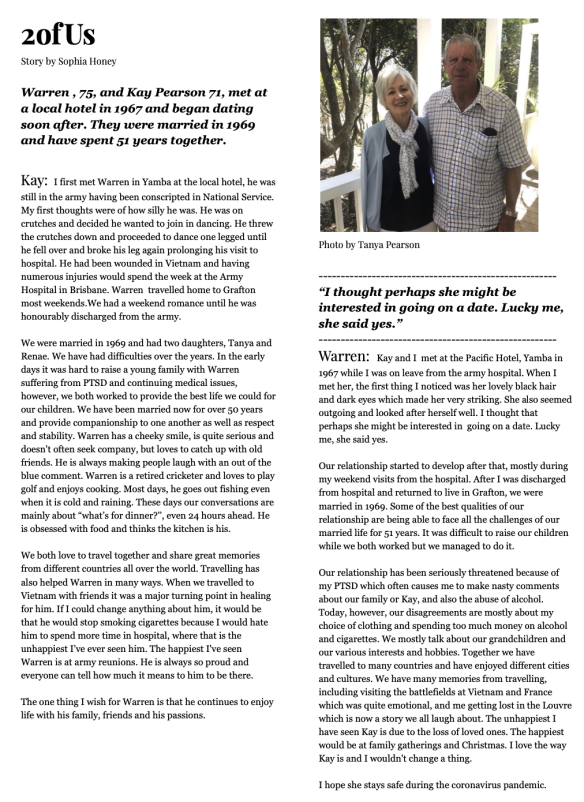


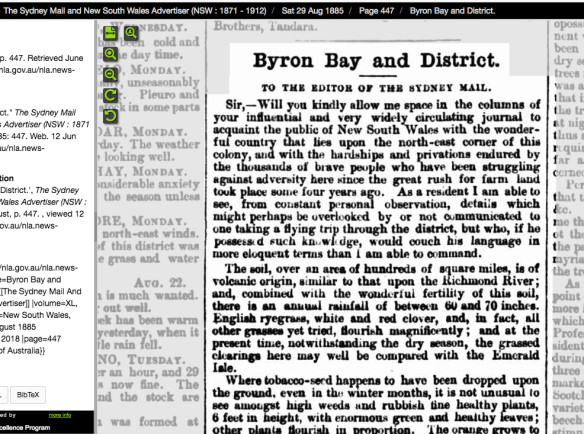

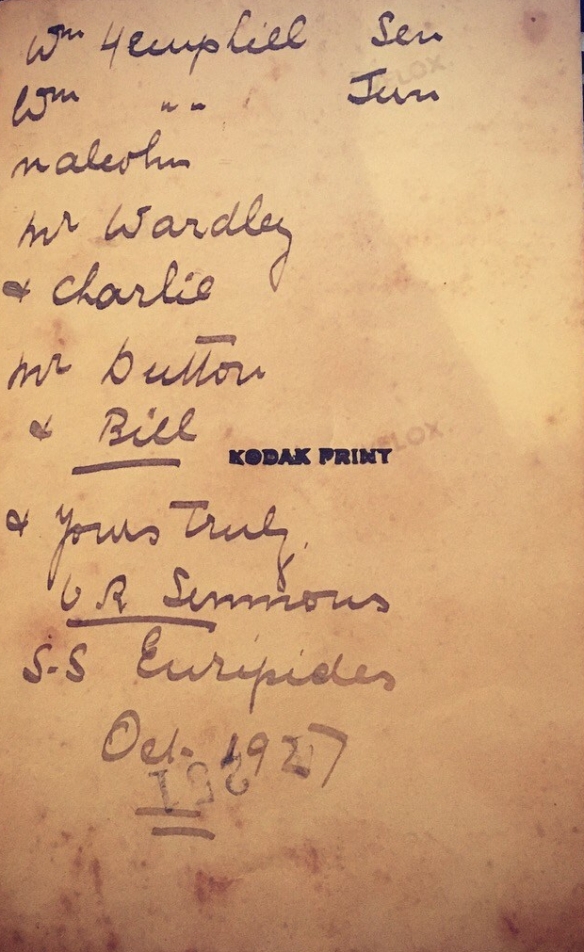
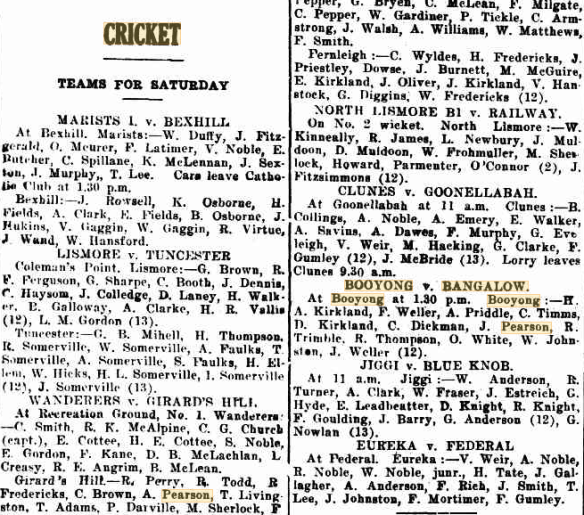
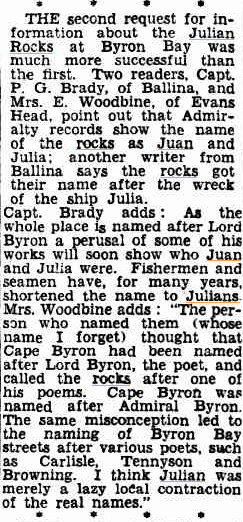 “NORTHEAST CORNER.” Northern Star (Lismore, NSW : 1876 – 1954) 17 Oct 1953: 4. Web. 19 Jan 2016 <
“NORTHEAST CORNER.” Northern Star (Lismore, NSW : 1876 – 1954) 17 Oct 1953: 4. Web. 19 Jan 2016 <



